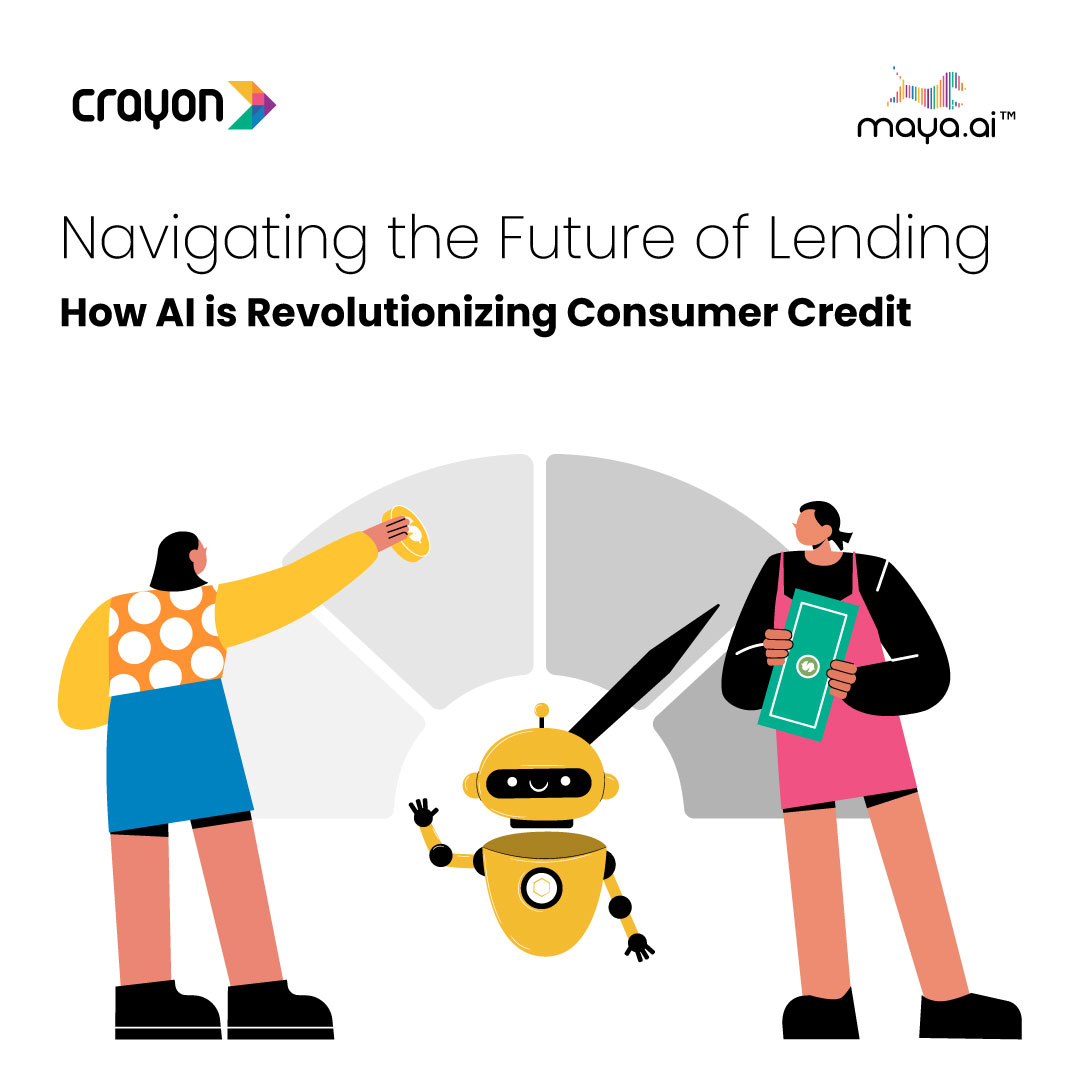
Turing Olympics
November 23, 2023
Legends of AI: Judea Pearl
November 30, 2023#The Crayon Blog
Combating Debanking in the Age of AI
The Crayon Blog | Published September 9, 2024 | Sunantha Sanjeeva Rao
Imagine coming back from a tiring day at work, eager to unwind and prepare for the weekend. You open your email, only to find a notification from your bank: your account has been closed without any warning. A wave of panic washes over you. How will you pay your bills? How will you buy groceries? This isn't just a hypothetical scenario for many people - it's an increasingly common reality known as debanking, with potentially devastating consequences for those impacted.
Debanking, also known as de-risking, is the closure of people's or organizations' bank accounts by banks who perceive the account holders to pose a financial, legal, regulatory, or reputational risk to the bank. This can happen for a variety of reasons, including:
Debanking, also known as de-risking, is the closure of people's or organizations' bank accounts by banks who perceive the account holders to pose a financial, legal, regulatory, or reputational risk to the bank. This can happen for a variety of reasons, including:
- Enforcement of anti-corruption and anti-money laundering laws
- Closing of bank accounts of sex workers and people considered to be politically exposed persons (PEPs)
- Closing of bank accounts of businesses or individuals that engage in activities that are controversial or that the bank disagrees with
With banks being the sole point of financial processes, those who have been debanked struggle with getting access to their money and moving on with their life and businesses. To avoid these scenarios, over the past few years, many have opted for Nonbank Financial Institutions (NBFIs). This has not been an overnight transformation or a trend. It started back in the 1960s, when the term disintermediation was first used.
What is disintermediation?
In the context of banking, disintermediation is the process of reducing or eliminating the role of intermediaries or middlemen in financial transactions. This can happen when individuals or businesses choose to deal directly with each other, or with non-bank financial institutions, rather than using traditional banks.
Today, technology is making it easier for individuals and businesses to conduct transactions directly with each other, without the need for a bank intermediary. For example, online payment systems, peer-to-peer (P2P) lending platforms, and mobile banking apps are all making it possible for people to borrow and lend money without going through a bank.
By eliminating intermediaries, disintermediation can help to reduce the costs of financial transactions. It can also lead to greater innovation in the financial industry. As individuals and businesses find new ways to manage their finances, banks are forced to adapt, or risk being left behind.
However, disintermediation can also have some drawbacks.
Today, technology is making it easier for individuals and businesses to conduct transactions directly with each other, without the need for a bank intermediary. For example, online payment systems, peer-to-peer (P2P) lending platforms, and mobile banking apps are all making it possible for people to borrow and lend money without going through a bank.
By eliminating intermediaries, disintermediation can help to reduce the costs of financial transactions. It can also lead to greater innovation in the financial industry. As individuals and businesses find new ways to manage their finances, banks are forced to adapt, or risk being left behind.
However, disintermediation can also have some drawbacks.
- Less regulation: When individuals and businesses deal directly with each other, there is less regulation in place to protect them from fraud and other scams. This can make it more difficult for consumers and businesses to get their money back if they are the victims of fraud.
- Less stability: Disintermediation can also reduce the stability of the financial system. When banks have fewer customers, they are more likely to fail. This can lead to economic instability and job losses.
In the late 1990s and early 2000s, the financial industry underwent a period of significant transformation. This is when reintermediation as a concept came about in the world of banking.
What is reintermediation?
This term was used to describe the observed trend of financial transactions returning to traditional intermediaries, such as banks, after a period of disintermediation.
As the financial industry matured and regulatory scrutiny of non-bank financial institutions increased, there was a shift back towards traditional intermediaries. This was due to factors such as the perceived riskiness of some non-bank financial institutions, the desire for greater security and stability, and the continued value proposition offered by traditional banks.
The term "reintermediation" gained wider recognition in the aftermath of the 2008 financial crisis, as traditional banks were seen as providing a more stable and resilient foundation for the financial system. The crisis also highlighted the potential risks associated with the rapid growth of NBFIs and the need for stronger regulation in this sector.
As the financial industry matured and regulatory scrutiny of non-bank financial institutions increased, there was a shift back towards traditional intermediaries. This was due to factors such as the perceived riskiness of some non-bank financial institutions, the desire for greater security and stability, and the continued value proposition offered by traditional banks.
The term "reintermediation" gained wider recognition in the aftermath of the 2008 financial crisis, as traditional banks were seen as providing a more stable and resilient foundation for the financial system. The crisis also highlighted the potential risks associated with the rapid growth of NBFIs and the need for stronger regulation in this sector.
Debanking in a post-reintermediation world
While reintermediation may offer some benefits, such as reduced risk and improved access to capital, it also has potential drawbacks, including higher costs and reduced competition. Additionally, debanking can exacerbate the negative effects of reintermediation by disproportionately targeting those who are already marginalized and excluded from the traditional financial system.
The relationship between reintermediation and debanking is complex and multifaceted. While reintermediation may not be a direct cause of debanking, it can create an environment in which banks are more likely to perceive certain groups as high-risk and therefore more likely to be debanked. This can lead to a vicious cycle where debanking further marginalizes those who are already excluded from the financial system, making it even more difficult for them to access essential financial services.
Addressing the issue of debanking requires a multi-pronged approach that includes:
The relationship between reintermediation and debanking is complex and multifaceted. While reintermediation may not be a direct cause of debanking, it can create an environment in which banks are more likely to perceive certain groups as high-risk and therefore more likely to be debanked. This can lead to a vicious cycle where debanking further marginalizes those who are already excluded from the financial system, making it even more difficult for them to access essential financial services.
Addressing the issue of debanking requires a multi-pronged approach that includes:
- Increased transparency and accountability for banks in their de-banking decisions
- Stronger regulatory oversight of non-bank financial institutions
- Support for alternative financial services providers that can serve those who have been debanked
- Efforts to promote financial inclusion and reduce discrimination in the financial system
As technology is increasingly used in various facets of banking, this is another application for Artificial Intelligence (AI). It can be trained to prevent debanking in a number of ways.
Identify and mitigate risk: AI can be used to analyze large amounts of data to identify patterns that may indicate that an account holder is engaging in illegal activity. This information can then be used to flag accounts for further review, and to take appropriate action if necessary.
Improve communication with customers: AI can be used to develop chatbots and other tools that can answer customer questions about de-banking and provide them with information about their rights and options.
Develop alternative financial services: AI can be used to develop new financial products and services that are available to people and businesses who have been debanked. For example, AI-powered financial services providers can use customer data to assess risk and provide financial services to people who would not be able to get them from traditional banks.
In addition to these specific applications, AI can also help to prevent debanking by making it more difficult for banks to unfairly target certain groups of people. For example, AI can be used to develop tools that can help banks to identify and eliminate biased data from their decision-making processes.
Overall, AI has the potential to play a significant role in preventing debanking. By using AI to identify and mitigate risk, improve communication with customers, and develop alternative financial services, banks can help to ensure that everyone has access to the financial services they need.
Identify and mitigate risk: AI can be used to analyze large amounts of data to identify patterns that may indicate that an account holder is engaging in illegal activity. This information can then be used to flag accounts for further review, and to take appropriate action if necessary.
Improve communication with customers: AI can be used to develop chatbots and other tools that can answer customer questions about de-banking and provide them with information about their rights and options.
Develop alternative financial services: AI can be used to develop new financial products and services that are available to people and businesses who have been debanked. For example, AI-powered financial services providers can use customer data to assess risk and provide financial services to people who would not be able to get them from traditional banks.
In addition to these specific applications, AI can also help to prevent debanking by making it more difficult for banks to unfairly target certain groups of people. For example, AI can be used to develop tools that can help banks to identify and eliminate biased data from their decision-making processes.
Overall, AI has the potential to play a significant role in preventing debanking. By using AI to identify and mitigate risk, improve communication with customers, and develop alternative financial services, banks can help to ensure that everyone has access to the financial services they need.
Recent Blogs
Subscribe to the Crayon Blog. Get the latest posts in your inbox!





